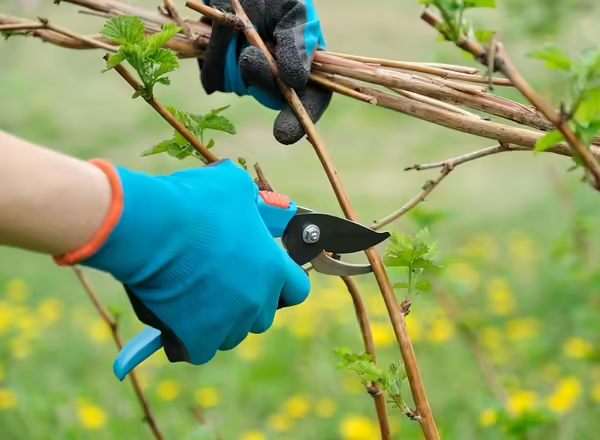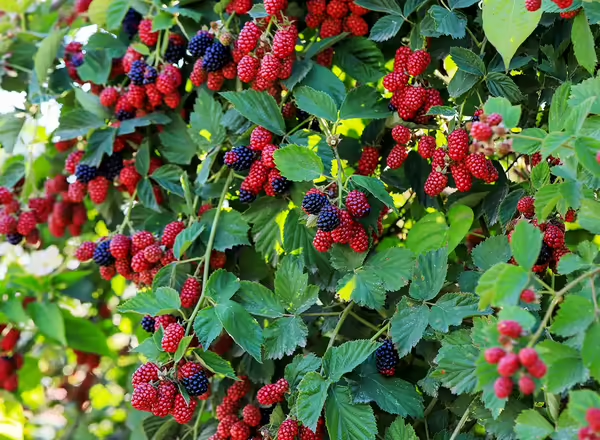
Caring for Growing Fruit Plants
Lack of rain while new plants are becoming established — during bloom and harvest and during late summer and fall when fruit buds are forming — can reduce the quantity and quality of fruit. For optimal growth, most small fruits require at least one inch of water per week during the growing season. Irrigation to supplement rainfall to this level is especially important for soils subject to drought, such as sandy soils, or soils with a shallow hardpan that restrict the development of a deep-root system.
If possible, locate the small fruit garden where water is readily available for irrigation. Sprinklers, porous soaking hoses, and drip or trickle hoses are suitable for applying water. Irrigate to thoroughly wet the soil to the depth of the roots, at least six inches. Shallow watering to a depth of only one to three inches encourages shallow root growth and is of little value (and may even be harmful) to long-term plant survival.

Correct pruning and training are necessary for good production of the brambles, blueberries, cur- rants, gooseberries, and grapes. The necessary tools are not complex or expensive. The hand clipper is used to cut back small branches and lateral shoots. There are two types of hand shears: the by-pass type cuts cleanly with a scissor-like action; the anvil type cuts with a crushing action. Most horticulturists agree that by-pass shears are superior to the anvil type. The lopping or long-handled shears are needed for larger branches and canes that cannot be cut with hand shears. The bramble hook is a specialized tool for removing entire canes from the cane fruits. A pruning saw may be needed for grapes and blueberries.
Pruning tools work best when they are sharp and clean. Tools should be cleaned after each use and their cutting edges should be wiped with an oily cloth to prevent rust. The cutting edges should be kept sharp to make smooth cuts that will heal quickly. After cutting diseased branches, tools should be sterilized with a 10% bleach or hydrogen peroxide solution or rubbing alcohol. To prevent rusting, rinse tools after 5 minutes when using chlorine bleach.

Individual small fruit plants or groups of small fruit plants can be included in the landscape to pro- vide fresh fruit when space is not available for a defined fruit garden.
Strawberries—particularly the disease-resistant, day- neutral types that bear fruit throughout the summer—can be useful for edging or ground-cover plantings. Grape arbors or hedge plantings of erect blackberries, raspberries, or blueberries can be used effectively to partially screen or separate parts of the lawn or garden. Blueberries are especially well adapted to the home landscape. They have lovely white bell- shaped flowers in the spring, blueberries in the summer, and attractive red foliage in the fall. With a little imagination and careful planning, small fruit plants can be combined with other plants to result in an eye- pleasing, appetizing landscape planting.